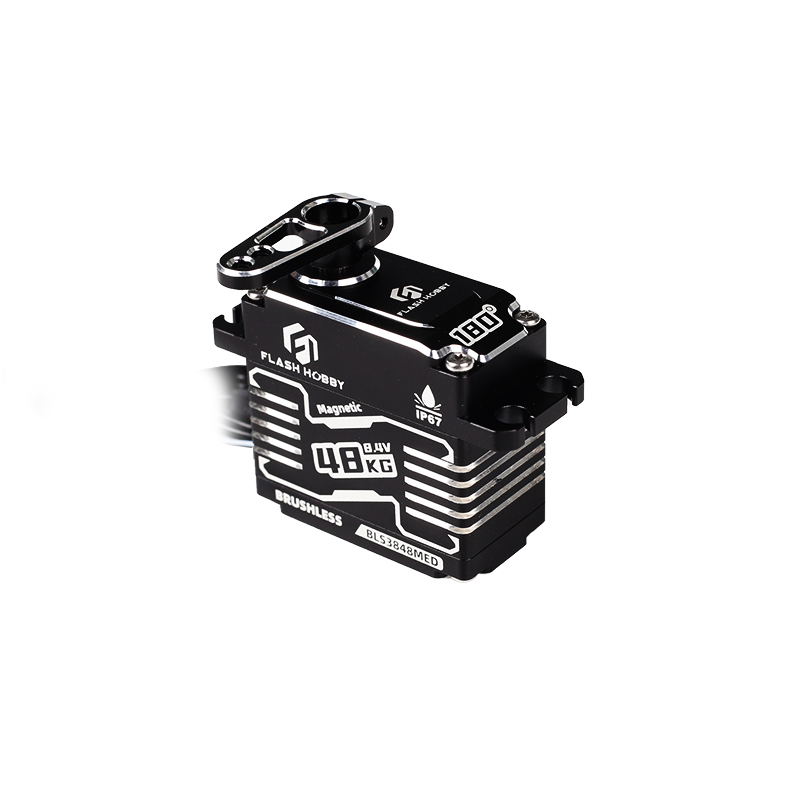Decoding Precision: Exploring the Mechanisms of Servo Motor Operation
2024-05-09
In the intricate world of robotics, automation, and precision engineering, servo motors stand as indispensable components, orchestrating the precise movement of machinery with unparalleled accuracy. But how exactly do these marvels of engineering work their magic? Let's delve into the inner workings of servo motors and unravel the mechanics behind their remarkable functionality.
Fundamentals of Servo Motors:
At its core, a servo motor is a rotary actuator that converts electrical signals into precise mechanical motion. Unlike conventional motors, such as AC induction motors or stepper motors, servo motors are specifically designed for closed-loop control systems, where feedback mechanisms continuously monitor and adjust motor performance to achieve desired motion profiles.
Key Components:
A typical servo motor comprises several key components, each playing a crucial role in its operation:
1. Rotor and Stator: Like all electric motors, a servo motor consists of a rotor (the rotating part) and a stator (the stationary part). The rotor typically contains permanent magnets, while the stator houses the motor windings.
2. Feedback Device: A feedback device, such as an encoder or resolver, provides real-time feedback on the motor's position, velocity, and acceleration. This feedback is essential for closed-loop control, allowing the motor to adjust its output based on deviations from the desired setpoint.
3. Controller: The controller is the brain of the servo system, processing feedback data and generating control signals to adjust the motor's operation. The controller compares the actual motor performance to the desired setpoint and calculates the necessary corrections to minimize error and maintain precise motion control.
4. Drive: The drive amplifies the control signals from the controller to drive the motor with the required power and voltage. It also provides protection features, such as overcurrent and overtemperature protection, to ensure safe and reliable operation of the motor.
Working Principle:
The operation of a servo motor is based on the principle of closed-loop control, wherein feedback from the motor's position sensor is used to adjust its operation in real-time. Here's how it works:
1. Setpoint Generation: The desired position, velocity, or torque is set by the user or the control system.
2. Feedback Acquisition: The feedback device continuously monitors the motor's actual performance, providing real-time information on its position, velocity, and acceleration.
3. Error Calculation: The controller compares the actual motor performance (feedback) to the desired setpoint, calculating the error (the difference between the two).
4. Control Signal Generation: Based on the error calculation, the controller generates control signals (typically voltage or current) to adjust the motor's operation and minimize the error.
5. Motor Adjustment: The drive amplifies and delivers the control signals to the motor, adjusting its speed, torque, or position to reduce the error and bring the motor's performance closer to the desired setpoint.
6. Continuous Adjustment: This process of feedback acquisition, error calculation, and motor adjustment repeats continuously, ensuring that the motor maintains precise motion control and tracks the desired setpoint accurately.
Applications of Servo Motors:
Servo motors find applications in a wide range of industries and domains, including robotics, manufacturing, aerospace, automotive, medical devices, and consumer electronics. They are used in various applications that require precise positioning, velocity, and acceleration control, such as CNC machines, robotic arms, automated packaging systems, aircraft control surfaces, medical imaging equipment, and more.
Conclusion:
In conclusion, servo motors represent the pinnacle of precision motion control, leveraging closed-loop feedback systems to achieve unparalleled accuracy and performance. By harnessing the synergy between electrical and mechanical components, servo motors play a vital role in driving innovation and advancement across diverse industries and applications. As technology continues to evolve, so too will the capabilities of servo motors, ensuring they remain indispensable tools for engineers, designers, and innovators pushing the boundaries of what's possible in automation and robotics.



